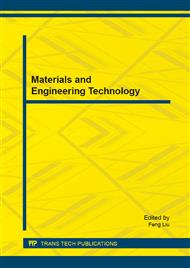p.1074
p.1082
p.1089
p.1093
p.1101
p.1108
p.1116
p.1124
p.1132
The Limitation of Maximum Detectable Deformation Resolved by Differential SAR Interferometry
Abstract:
Differential SAR interferometry (DInSAR) provides a new tool for detecting deformation in the line of sight (LOS) of Earth’s surface. However, not all deformation can be detected. In order to get the maximum detectable deformation, the decorrelation in terms of coherence and deformation has been proposed. The influence of deformation on decorrelation is then discussed for both registering drifted pixels method and registering fixed method. Based on aforementioned analysis, the limitation of maximum detectable deformation has been derived for these two cases. Furthermore, computer simulations are carried out to confirm the detectable deformation discussion as the coherence equals to 0.5. The result of registering drifted pixels method shows that the detectable limitation does not only depend on coherence but also on other factors such as beamwidth. The result of registering fixed pixels method, however, shows that the detectable deformation and baseline have an inverse relationship.
Info:
Periodical:
Pages:
1101-1107
Citation:
Online since:
January 2015
Authors:
Price:
Сopyright:
© 2015 Trans Tech Publications Ltd. All Rights Reserved
Share:
Citation:


